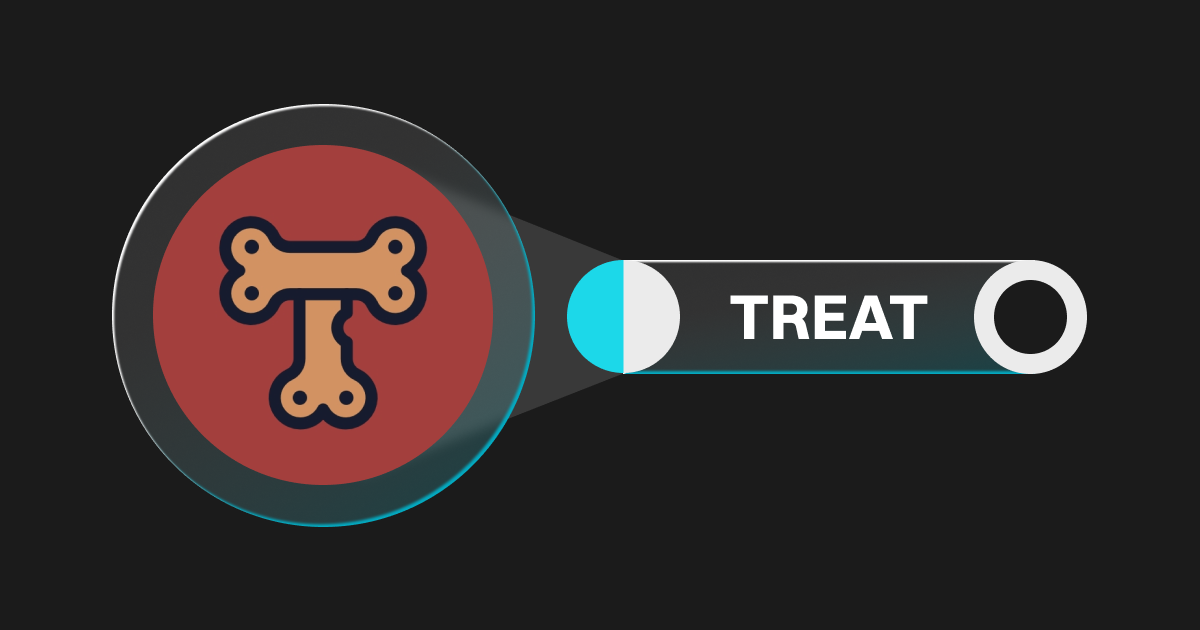Bitget: Global kunlik savdo hajmi bo'yicha top 4!
BTC bozor ulushi60.81%
Bitgetda yangi listinglar:Pi Network
Altcoin mavsumi indeksi:0(Bitcoin mavsumi)
BTC/USDT$87569.97 (+0.40%)Qo'rquv va ochko'zlik Indeksi40(Qo'rquv)
Jami spot Bitcoin ETF sof oqimi +$89.6M (1K); +$670.3M (7K).Bozor-oldi ro'yxatida keltirilgan tangalarPAWS,WCT6200 USDT qiymatidagi yangi foydalanuvchilar uchun xush kelibsiz sovg'a to'plami.Hoziroq oling
Bitget ilovasi yordamida istalgan vaqtda va istalgan joyda savdo qiling. Hozir yuklab oling
Bitget: Global kunlik savdo hajmi bo'yicha top 4!
BTC bozor ulushi60.81%
Bitgetda yangi listinglar:Pi Network
Altcoin mavsumi indeksi:0(Bitcoin mavsumi)
BTC/USDT$87569.97 (+0.40%)Qo'rquv va ochko'zlik Indeksi40(Qo'rquv)
Jami spot Bitcoin ETF sof oqimi +$89.6M (1K); +$670.3M (7K).Bozor-oldi ro'yxatida keltirilgan tangalarPAWS,WCT6200 USDT qiymatidagi yangi foydalanuvchilar uchun xush kelibsiz sovg'a to'plami.Hoziroq oling
Bitget ilovasi yordamida istalgan vaqtda va istalgan joyda savdo qiling. Hozir yuklab oling
Bitget: Global kunlik savdo hajmi bo'yicha top 4!
BTC bozor ulushi60.81%
Bitgetda yangi listinglar:Pi Network
Altcoin mavsumi indeksi:0(Bitcoin mavsumi)
BTC/USDT$87569.97 (+0.40%)Qo'rquv va ochko'zlik Indeksi40(Qo'rquv)
Jami spot Bitcoin ETF sof oqimi +$89.6M (1K); +$670.3M (7K).Bozor-oldi ro'yxatida keltirilgan tangalarPAWS,WCT6200 USDT qiymatidagi yangi foydalanuvchilar uchun xush kelibsiz sovg'a to'plami.Hoziroq oling
Bitget ilovasi yordamida istalgan vaqtda va istalgan joyda savdo qiling. Hozir yuklab oling

Tanga bilan bog'liq
Narx kalkulyatori
Narxlar tarixi
Narx bashorati
Texnik tahlil
Tanga sotib olish bo'yicha qo'llanma
Kripto toifasi
Foyda kalkulyatori

Treat narxTREAT
Ro'yxatga kiritilmagan
Kotirovka valyutasi:
UZS
Ma'lumotlar uchinchi tomon provayderlaridan olinadi. Ushbu sahifa va taqdim etilgan ma'lumotlar hech qanday aniq kriptovalyutani tasdiqlamaydi. Ro'yxatga olingan tangalar bilan savdo qilishni xohlaysizmi? Bu yerni bosing
so'm1.76-2.46%1D
Narx grafigi
Oxirgi yangilanish: 2025-03-27 21:53:35(UTC+0)
Bozor kapitali:--
To’liq suyultirilgan bozor kapitali:--
Hajm (24s):so'm11,301,688.18
24s hajm / bozor qiymati:0.00%
24s yuqori:so'm1.86
24s past:so'm1.73
Hamma vaqtdagi eng yuqori:so'm161.48
Hamma vaqtdagi eng past:so'm0.006870
Aylanma ta'minot:-- TREAT
Jami ta'minot:
3,333,333,333TREAT
Aylanma tezligi:0.00%
Maksimal ta'minot:
--TREAT
BTC'dagi narx:0.{8}1555 BTC
ETH'dagi narx:0.{7}6753 ETH
BTC bozor kapitallashuvidagi narxi:
--
ETH bozor kapitallashuvidagi narxi:
--
Shartnomalar:
0xfbd5...aaa146b(Ethereum)
Ko’proq
Bugun Treat haqida qanday fikrdasiz?
Izoh: Ushbu ma'lumot faqat ma'lumot uchun.
Treatning bugungi narxi
Treat ning joriy narxi bugungi kunda (TREAT / UZS) uchun so'm1.76, joriy kapitallashuvi so'm0.00 UZS. 24 soatlik savdo hajmi so'm11.30M UZS. TREAT dan UZS gacha, narx real vaqtda yangilanadi. Treat oxirgi 24 soat ichida -2.46%. Muomaladagi hajm 0 .
TREATning eng yuqori narxi qancha?
TREAT barcha vaqtlardagi eng yuqori ko'rsatkichga ega (ATH) so'm161.48 bo'lib, 2025-01-15 tomonidan qayd etilgan.
TREAT ning eng past narxi qancha?
TREAT barcha vaqtlardagi eng past ko'rsatkichga ega (ATL) so'm0.006870, 2023-01-13 da qayd etilgan.
Treat narx bashorati
2026 da TREAT narxi qanday bo'ladi?
TREAT tarixiy narx bajarilishini bashorat qilish modeli asosida TREAT narxi 2026 da so'm3.64 ga yetishi prognoz qilinmoqda.
2031 da TREAT narxi qanday bo'ladi?
2031 da TREAT narxi +3.00% ga o'zgarishi kutilmoqda. 2031 oxiriga kelib, TREAT narxi so'm5.26 ga yetishi prognoz qilinmoqda, jami ROI +185.04%.
Treat narx tarixi (UZS)
Treat narxi o'tgan yil davomida -91.02% ni tashkil qiladi. O'tgan yildagi ning UZS dagi eng yuqori narxi so'm161.48 va o'tgan yildagi ning UZS dagi eng past narxi so'm1.27 edi.
VaqtNarx o'zgarishi (%) Eng past narx
Eng past narx Eng yuqori narx
Eng yuqori narx 
 Eng past narx
Eng past narx Eng yuqori narx
Eng yuqori narx 
24h-2.46%so'm1.73so'm1.86
7d-15.09%so'm1.73so'm2.22
30d-15.59%so'm1.27so'm2.84
90d-84.84%so'm1.27so'm161.48
1y-91.02%so'm1.27so'm161.48
Hamma vaqt-82.51%so'm0.006870(2023-01-13, 2 yil avval )so'm161.48(2025-01-15, 72 kun oldin )
Treat bozor ma’lumotlari
Treatning bozor qiymati tarixi
Treat kontsentratsiya bo'yicha xoldinglar
Kitlar
Investorlar
Chakana savdo
Saqlash vaqti bo'yicha Treat manzil
Xolderlar
Kruizerlar
Treyderlar
Jonli coinInfo.name (12) narx grafigi

Treat reyting
Jamiyatning o'rtacha baholari
4.4
Ushbu kontent faqat ma'lumot olish uchun mo'ljallangan.
TREAT mahalliy valyutaga
1 TREAT dan MXN$01 TREAT dan GTQQ01 TREAT dan CLP$0.131 TREAT dan UGXSh0.51 TREAT dan HNLL01 TREAT dan ZARR01 TREAT dan TNDد.ت01 TREAT dan IQDع.د0.181 TREAT dan TWDNT$01 TREAT dan RSDдин.0.011 TREAT dan DOP$0.011 TREAT dan MYRRM01 TREAT dan GEL₾01 TREAT dan UYU$0.011 TREAT dan MADد.م.01 TREAT dan OMRر.ع.01 TREAT dan AZN₼01 TREAT dan KESSh0.021 TREAT dan SEKkr01 TREAT dan UAH₴0.01
- 1
- 2
- 3
- 4
- 5
Oxirgi yangilanish: 2025-03-27 21:53:35(UTC+0)
Treat yangiliklar

$TREAT ishga tushirish jarayonida Magna va Shib tomonidan to'liq qo'llab-quvvatlash
交易员小帅•2025-01-15 02:55

Shiba Inuning TREAT tokeni (TREAT): Shiba Inu ekotizimining kelajagini kuchaytirish
Bitget Academy•2025-01-13 10:08
![[Boshlang'ich ro'yxat] Bitget Treat (TREAT) ro'yxatini taqdim qiladi. Keling va 87,450,000 TREAT ulushini oling!](/price/_next/static/media/cover-placeholder.a3a73e93.svg)
[Boshlang'ich ro'yxat] Bitget Treat (TREAT) ro'yxatini taqdim qiladi. Keling va 87,450,000 TREAT ulushini oling!
Bitget Announcement•2025-01-10 11:00

Treat (TREAT) Bitget Launchpool ro'yxatiga kiritiladi — 87,450,000 TREAT ulushi uchun BGB va USDT qulflang!
Bitget Announcement•2025-01-10 11:00
Bitgetda yangi listinglar
Yangi listinglar
Ko'proq sotib oling
SAVOL-JAVOBLAR
Treat ning hozirgi narxi qancha?
Treatning jonli narxi (TREAT/UZS) uchun so'm1.76, joriy bozor qiymati so'm0 UZS. Kripto bozorida 24/7 doimiy faoliyat tufayli Treat qiymati tez-tez o'zgarib turadi. Treatning real vaqtdagi joriy narxi va uning tarixiy maʼlumotlari Bitget’da mavjud.
Treat ning 24 soatlik savdo hajmi qancha?
Oxirgi 24 soat ichida Treat savdo hajmi so'm11.30M.
Treatning eng yuqori koʻrsatkichi qancha?
Treatning eng yuqori ko‘rsatkichi so'm161.48. Bu Treat ishga tushirilgandan beri eng yuqori narx hisoblanadi.
Bitget orqali Treat sotib olsam bo'ladimi?
Ha, Treat hozirda Bitget markazlashtirilgan birjasida mavjud. Batafsil koʻrsatmalar uchun foydali treat qanday sotib olinadi qoʻllanmamizni koʻrib chiqing.
Treat ga sarmoya kiritish orqali barqaror daromad olsam bo'ladimi?
Albatta, Bitget savdolaringizni avtomatlashtirish va daromad olish uchun aqlli savdo botlari bilan strategik savdo platformasi ni taqdim etadi.
Eng past toʻlov bilan Treat ni qayerdan sotib olsam boʻladi?
strategik savdo platformasi endi Bitget birjasida mavjud ekanligini ma’lum qilishdan mamnunmiz. Bitget treyderlar uchun foydali investitsiyalarni ta'minlash uchun sanoatning yetakchi savdo to'lovlari va tubanligini taklif qiladi.
Qayerdan kripto sotib olsam bo'ladi?
Video bo'limi — tezkor tekshiruv, tezkor savdo

Bitgetda shaxsni tasdqilashni qanday yakunlash va o'zingizni firibgarlikdan himoya qilish kerak
1. Bitget hisobingizga kiring.
2. Agar siz Bitgetda yangi bo'lsangiz, hisob yaratish bo'yicha o'quv qo'llanmamizni tomosha qiling.
3. Profilingiz belgisiga kursorni olib keling, "Tasdiqlanmagan" tugmasini bosing va "Tasdiqlash" tugmasini bosing.
4. Chiqaruvchi mamlakat yoki mintaqa va ID turini tanlang va ko'rsatmalarga amal qiling.
5. O'zingizning xohishingizga ko'ra "Mobil tekshiruv" yoki "Kompyuter" ni tanlang.
6. Ma'lumotlaringizni kiriting, shaxsingizni tasdiqlovchi hujjat nusxasini yuboring va selfi oling.
7. Arizangizni yuboring va bo'ldi, siz shaxsingizni tasdiqlashni tugatdingiz!
Kriptovalyutalarga sarmoya kiritish, jumladan Bitgetda onlayn Treat xarid qilish xavflarni o‘z ichiga oladi. Bitget Treat sotib olishning oson va qulay usullarini taklif etadi va birjada ko'rsatilgan kriptovalyuta haqida to'liq ma'lumot berishga harakat qiladi. Biroq, biz Treat xaridingizdan kelib chiqadigan natijalar uchun javobgar emasmiz. Taqdim etilgan barcha ma'lumotlar xarid uchun tavsiya etilmaydi.
Bitget Insaytlari

COINSTAGES
6S
Michael Saylor’s Bitcoin Strategy: A Vision for Crypto Dominance!
On March 27, 2025, Michael Saylor, the visionary co-founder and Executive Chairman of Strategy (formerly MicroStrategy), continues to make headlines with his unrelenting Bitcoin strategy. Known for transforming his company into the world’s largest corporate holder of Bitcoin, Saylor’s latest moves and bold predictions are reshaping how the market views the leading cryptocurrency. As of today, Strategy holds over 506,137 BTC, and Saylor shows no signs of slowing down.
A Relentless Bitcoin Acquisition Playbook
Saylor’s approach is as audacious as it is methodical. This week, Strategy announced the purchase of an additional 6,911 BTC for $584.1 million, acquired at an average price of $84,529 per Bitcoin. This brings the company’s total holdings to 506,137 BTC, valued at over $44 billion, representing roughly 2.4% of Bitcoin’s 21 million total supply. The purchase was funded through a recent $722.5 million sale of Perpetual Strife Preferred Stock (STRF), a financial instrument Saylor has leveraged to fuel his Bitcoin stockpiling.
Since adopting Bitcoin as a treasury reserve asset in 2020, Strategy has used a mix of debt, equity, and stock offerings to amass its colossal holdings. Saylor’s philosophy is clear: treat Bitcoin as “digital gold” and a hedge against inflation, while capitalizing on market dips to buy more. “We’ve built an indestructible balance sheet,” Saylor recently told CoinDesk. “Even if Bitcoin drops 99%, there’s no margin call coming.”
Four Pillars of Saylor’s Vision
Analysts and Saylor himself have outlined key elements of his Bitcoin strategy, which he believes could propel the asset to a $200 trillion market cap by 2045:
Corporate Adoption: Strategy’s success has inspired others, like GameStop, which is rumored to be raising $1.3 billion to follow a similar Bitcoin treasury model. Saylor sees this as the start of a corporate “Bitcoin arms race.”
U.S. Strategic Reserve: Saylor advocates for the U.S. to establish a Strategic Bitcoin Reserve, estimating its value could range from $3 trillion to $106 trillion over the next two decades. He argues this would cement Bitcoin’s status as a global reserve asset.
Personal Legacy: In a surprising twist, Saylor has hinted at burning his private Bitcoin keys before his death as a form of “decentralized charity,” reducing supply and boosting value for remaining holders a move likened to Satoshi Nakamoto’s mysterious exit.
Market Influence: By relentlessly buying BTC Strategy’s latest haul pushed its year-to-date BTC yield to 7.7% Saylor drives institutional interest and bullish sentiment, amplified by ETF inflows and a market cap nearing $3 trillion.
Market Reactions and Criticism
Saylor’s strategy has polarized opinions. Supporters laud his first-mover advantage, noting that Strategy’s stock has soared nearly 2,200% since 2020, outpacing many tech giants. Posts on X praise his foresight, with some calling him “the architect of Bitcoin’s corporate era.” Critics, however, like Peter Schiff, argue that this demand is speculative, fueled by hype over a U.S. reserve rather than fundamentals. Schiff has dismissed the reserve idea as a “scam” to lure retail investors.
Despite the debate, Bitcoin’s price remains robust, trading above $87,000 today, buoyed by Strategy’s purchases and broader market optimism. Saylor’s influence extends beyond his company, with firms like Metaplanet in Japan mirroring his playbook and reaping rewards.
What’s Next for Saylor and Bitcoin?
Saylor shows no signs of retreat. With plans to raise up to $21 billion more for Bitcoin buys, Strategy aims to solidify its position as a crypto titan. His cryptic X post this week “Everyone wants a winning strategy” hints at his belief that Bitcoin is the ultimate asset for the 21st century. Whether his vision of a $200 trillion BTC economy materializes, or his aggressive bets falter under market turbulence, one thing is certain: Michael Saylor has redefined corporate crypto strategy.
Will Bitcoin hit Saylor’s lofty targets, or will the skeptics prevail? As of 9:12 PM WIB, the crypto world remains captivated by his next move.
#bitcoin
BTC+0.74%
X+2.18%

AshuBajwaB60
7S
# __Revolutionizing Healthcare: The Future of Artificial Intelligence and Machine Learning__
The healthcare sector is on the cusp of a revolution, driven by the increasing adoption of artificial intelligence (AI) and machine learning (ML). AI and ML are transforming the way we diagnose, treat, and prevent diseases, making healthcare more personalized, efficient, and effective. In this article, we'll explore the future of AI and ML in healthcare, highlighting their benefits, challenges, and potential applications.
# Benefits of Artificial Intelligence and Machine Learning in Healthcare
AI and ML offer several benefits, including:
1. *Improved Diagnostic Accuracy*: AI and ML can analyze large amounts of medical data, improving diagnostic accuracy and reducing errors.
2. *Personalized Medicine*: AI and ML can help personalize treatment plans, tailoring them to individual patients' needs and characteristics.
3. *Streamlined Clinical Workflows*: AI and ML can automate routine tasks, freeing up clinicians to focus on more complex and high-value tasks.
4. *Enhanced Patient Engagement*: AI and ML can enable patients to take a more active role in their healthcare, providing them with personalized health advice and support.
5. *Reduced Healthcare Costs*: AI and ML can help reduce healthcare costs, minimizing unnecessary tests, procedures, and hospitalizations.
# Challenges of Artificial Intelligence and Machine Learning in Healthcare
AI and ML also face several challenges, including:
1. *Data Quality and Integration*: AI and ML require high-quality, integrated data, which can be difficult to obtain in healthcare.
2. *Regulatory Frameworks*: AI and ML raise regulatory concerns, including issues related to data privacy, security, and informed consent.
3. *Clinical Validation*: AI and ML require clinical validation, ensuring that they are safe, effective, and reliable in real-world clinical settings.
4. *Cybersecurity*: AI and ML raise cybersecurity concerns, including the risk of data breaches, hacking, and other cyber threats.
5. *Workforce Disruption*: AI and ML may disrupt the healthcare workforce, requiring clinicians to develop new skills and adapt to new technologies.
# Applications of Artificial Intelligence and Machine Learning in Healthcare
AI and ML are being applied in various ways, including:
1. *Medical Imaging*: AI and ML are being used in medical imaging, enabling clinicians to analyze images more accurately and quickly.
2. *Clinical Decision Support*: AI and ML are being used in clinical decision support, providing clinicians with personalized treatment recommendations and guidelines.
3. *Patient Engagement*: AI and ML are being used in patient engagement, enabling patients to take a more active role in their healthcare and providing them with personalized health advice and support.
4. *Disease Surveillance*: AI and ML are being used in disease surveillance, enabling clinicians to track and predict disease outbreaks more accurately.
5. *Personalized Medicine*: AI and ML are being used in personalized medicine, enabling clinicians to tailor treatment plans to individual patients' needs and characteristics.
# Conclusion
The future of healthcare is artificial intelligence and machine learning, offering a more personalized, efficient, and effective way of delivering healthcare. While AI and ML face several challenges, including data quality and integration, regulatory frameworks, and clinical validation, the benefits of AI and ML, including improved diagnostic accuracy, personalized medicine, and reduced healthcare costs, make them an attractive option for many healthcare providers and organizations.
# Recommendations
1. *Invest in Artificial Intelligence and Machine Learning Research and Development*: Invest in research and development to improve the accuracy, efficiency, and effectiveness of AI and ML in healthcare.
2. *Develop Regulatory Frameworks*: Develop regulatory frameworks to govern the use of AI and ML in healthcare, ensuring that they are safe, effective, and reliable.
3. *Provide Clinical Validation*: Provide clinical validation to ensure that AI and ML are safe, effective, and reliable in real-world clinical settings.
4. *Address Cybersecurity Concerns*: Address cybersecurity concerns, including the risk of data breaches, hacking, and other cyber threats.
5. *Support Workforce Development*: Support workforce development, enabling clinicians to develop the skills and expertise needed to work effectively with AI and ML.
TREAT-4.53%
CYBER+1.35%

AshuBajwaB60
21S
# __Revolutionizing Mental Health: The Future of Mindfulness and Meditation__
# __Revolutionizing Mental Health: The Future of Mindfulness and Meditation__
The world is facing a mental health crisis, with millions of people struggling with anxiety, depression, and other mental health conditions. To address this crisis, mindfulness and meditation are being increasingly recognized as essential tools for maintaining good mental health. In this article, we'll explore the future of mindfulness and meditation, highlighting their benefits, challenges, and potential applications.
# Benefits of Mindfulness and Meditation
Mindfulness and meditation offer several benefits, including:
1. *Reduced Stress and Anxiety*: Mindfulness and meditation have been shown to reduce stress and anxiety, improving overall mental health and well-being.
2. *Improved Emotional Regulation*: Mindfulness and meditation enable individuals to better regulate their emotions, responding to challenging situations in a more thoughtful and intentional way.
3. *Enhanced Focus and Concentration*: Mindfulness and meditation improve focus and concentration, enabling individuals to stay present and engaged in their daily activities.
4. *Better Sleep*: Mindfulness and meditation have been shown to improve sleep quality, duration, and depth, leading to better rest and recovery.
5. *Increased Self-Awareness*: Mindfulness and meditation enable individuals to develop greater self-awareness, understanding their thoughts, emotions, and behaviors in a more profound way.
# Challenges of Mindfulness and Meditation
Mindfulness and meditation also face several challenges, including:
1. *Cultural and Social Barriers*: Mindfulness and meditation may be perceived as unconventional or unorthodox, creating cultural and social barriers to adoption.
2. *Limited Accessibility*: Mindfulness and meditation may be inaccessible to individuals with limited mobility, sensory impairments, or other disabilities.
3. *Time Commitment*: Mindfulness and meditation require a regular time commitment, which can be challenging for individuals with busy schedules or multiple responsibilities.
4. *Lack of Guidance*: Mindfulness and meditation require guidance and instruction, which can be lacking in many communities or online resources.
5. *Scientific Skepticism*: Mindfulness and meditation may be subject to scientific skepticism, with some researchers questioning their efficacy or validity.
# Applications of Mindfulness and Meditation
Mindfulness and meditation are being applied in various ways, including:
1. *Clinical Settings*: Mindfulness and meditation are being used in clinical settings, such as hospitals and therapy clinics, to treat mental health conditions and promote overall well-being.
2. *Educational Institutions*: Mindfulness and meditation are being used in educational institutions, such as schools and universities, to improve student mental health, academic performance, and social relationships.
3. *Workplace Wellness*: Mindfulness and meditation are being used in workplace wellness programs, to reduce employee stress, improve productivity, and enhance job satisfaction.
4. *Community Programs*: Mindfulness and meditation are being used in community programs, such as yoga studios, community centers, and places of worship, to promote mental health, social connection, and community cohesion.
5. *Digital Platforms*: Mindfulness and meditation are being used on digital platforms, such as apps, websites, and social media, to provide accessible, convenient, and personalized mindfulness and meditation experiences.
# Conclusion
The future of mental health is mindfulness and meditation, offering a powerful, evidence-based approach to reducing stress, anxiety, and other mental health conditions. While mindfulness and meditation face several challenges, including cultural and social barriers, limited accessibility, and scientific skepticism, the benefits of mindfulness and meditation, including reduced stress and anxiety, improved emotional regulation, and enhanced focus and concentration, make them an attractive option for many individuals and organizations.
# Recommendations
1. *Incorporate Mindfulness and Meditation into Daily Life*: Incorporate mindfulness and meditation into daily life, starting with short, regular practices, and gradually increasing duration and frequency.
2. *Seek Guidance and Instruction*: Seek guidance and instruction from qualified mindfulness and meditation teachers, therapists, or healthcare professionals.
3. *Use Digital Platforms and Resources*: Use digital platforms and resources, such as apps, websites, and social media, to access mindfulness and meditation content, community, and support.
4. *Integrate Mindfulness and Meditation into Clinical and Educational Settings*: Integrate mindfulness and meditation into clinical and educational settings, to promote mental health, academic performance, and social relationships.
5. *Conduct Further Research and Evaluation*: Conduct further research and evaluation on the efficacy, effectiveness, and scalability of mindfulness and meditation interventions, to inform policy, practice, and future research.
TREAT-4.53%
PEOPLE+0.48%

ℝ𝕦𝕓𝕚𝕜𝕤 (♟️,♟️)
1K
𝐐𝐮𝐚𝐧𝐭𝐮𝐦 𝐄𝐜𝐨𝐧𝐨𝐦𝐢𝐜𝐬 𝐚𝐧𝐝 𝐓𝐨𝐤𝐞𝐧 𝐅𝐫𝐚𝐦𝐞𝐰𝐨𝐫𝐤
𝟏. 𝐅𝐫𝐨𝐦 𝐂𝐥𝐚𝐬𝐬𝐢𝐜𝐚𝐥 𝐭𝐨 𝐐𝐮𝐚𝐧𝐭𝐮𝐦 𝐓𝐨𝐤𝐞𝐧 𝐌𝐨𝐝𝐞𝐥𝐬
Classical economics assumes rational actors, perfect information, and linear decision-making.
Quantum Economics says instead that agents exist in overlapping states of preferences, with behavior influenced by observation, uncertainty, and context.
Tokens create environments where utility, speculation, and governance are entangled. Users hold contradictory intentions simultaneously.
𝟐. 𝐐𝐮𝐚𝐧𝐭𝐮𝐦 𝐏𝐫𝐢𝐧𝐜𝐢𝐩𝐥𝐞𝐬 𝐚𝐧𝐝 𝐓𝐡𝐞𝐢𝐫 𝐄𝐜𝐨𝐧𝐨𝐦𝐢𝐜 𝐈𝐧𝐭𝐞𝐫𝐩𝐫𝐞𝐭𝐚𝐭𝐢𝐨𝐧
𝟑. 𝐐𝐮𝐚𝐧𝐭𝐮𝐦 𝐓𝐨𝐤𝐞𝐧 𝐅𝐫𝐚𝐦𝐞𝐰𝐨𝐫𝐤 𝐃𝐞𝐬𝐢𝐠𝐧
• Multi-State Tokens: Tokens designed with dual utility: governance and collateral.
• Probabilistic Incentives: Instead of fixed rewards, employ random or probability-weighted token rewards to model uncertainty.
• Entangled Token Models: For cross-protocol tokens, LSTs, for example, design systems where burning, locking, or other demand mechanisms for tokens in Protocol A auto-impacts Protocol B.
𝟒. 𝐕𝐚𝐥𝐮𝐞 𝐑𝐞𝐜𝐚𝐩𝐭𝐮𝐫𝐞 𝐅𝐥𝐨𝐰𝐬 𝐭𝐡𝐫𝐨𝐮𝐠𝐡 𝐐𝐮𝐚𝐧𝐭𝐮𝐦 𝐋𝐞𝐧𝐬𝐞𝐬
Traditional frameworks treat value flow linearly
Work → Reward → Exit.
Quantum economics operates on a cyclical, recursive value flows.
Staking → Restaking → Looping → Yield Farming → MEV Impact
Flow direction is probabilistic and reversible.
𝟓. 𝐆𝐨𝐯𝐞𝐫𝐧𝐚𝐧𝐜𝐞, 𝐎𝐛𝐬𝐞𝐫𝐯𝐚𝐭𝐢𝐨𝐧, 𝐚𝐧𝐝 𝐌𝐚𝐫𝐤𝐞𝐭 𝐂𝐨𝐥𝐥𝐚𝐩𝐬𝐞
• Observation In tokens: Heavy investor scrutiny (whale wallet tracking, governance vote rumors) changes market outcomes.
• Design implication: Need for obfuscation layers or prediction-resistant systems.
𝟔. 𝐓𝐨𝐤𝐞𝐧 𝐕𝐚𝐥𝐮𝐚𝐭𝐢𝐨𝐧 𝐚𝐧𝐝 𝐌𝐚𝐫𝐤𝐞𝐭 𝐃𝐞𝐬𝐢𝐠𝐧
Classical discounted cash flow or network models fail in quantum systems.
• Suggest a model where the expected value is a probability cloud influenced by events, sentiment waves, and narrative shifts.
Finally, tokens aren’t static assets, they exist in overlapping states influenced by narrative, sentiment, and participation. Quantum Economics provides a better lens to model unpredictable markets.
Thanks for reading!
WAVES+0.05%
TREAT-4.53%

ben171717
1K
More kind of news to confuse people. ✍️
My take is : ranging for couple of days and get the trap even stronger.
No key levels as been taken, treat all trade as scalp and manage risk accordingly.
PEOPLE+0.48%
TREAT-4.53%
Shunga o'xshash aktivlar
Mashhur kriptovalyutalar
Bozor kapitali bo'yicha eng yaxshi 8 kriptovalyuta tanlovi.
Yaqinda qo’shildi
Eng so’nggi qo’shilgan kriptovalyutalar.
Taqqoslanadigan bozor kapitali
Bitget aktivlari orasida ushbu 8 tasi bozor qiymati bo'yicha Treat ga eng yaqin hisoblanadi.


































